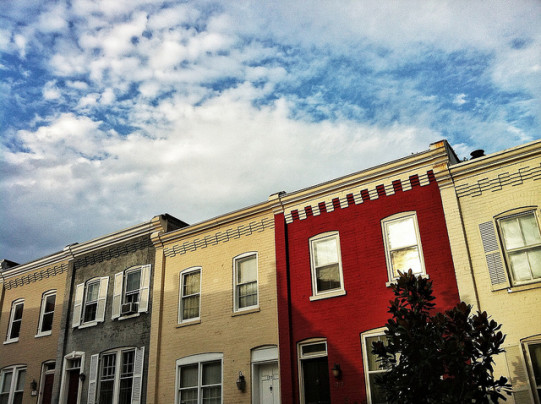The housing market is set to have its best year since 2007, largely due to an improved economy and labor market. But, despite the gains, home price increases are outpacing income growth and causing prospective buyers to remain cautious, according to the latest Home Purchase Sentiment Index from Fannie Mae. The Index – which measures Americans’ attitudes toward buying and selling a home – fell slightly in November, though it remains at a high level. Doug Duncan, Fannie Mae’s senior vice president and chief economist, said the results are not a surprise. “The latest reading of the Home Purchase Sentiment Index remains near the survey’s high witnessed in June, exemplifying the theme we laid out at the beginning of the year: the economy drags housing upward,” Duncan said. “While aggregate income growth has gradually picked up with a continually improving labor market, consumers’ assessment of their income over the past year has not yet shown sustained improvement, partially weighing on overall sentiment.” Duncan feels that, until Americans feel more financially confident, they may be hesitant to buy. More here.
Archive for December 2015
Real Estate Pros Say Buyer Traffic Is Strong
The National Association of Realtors surveys its members each month with a poll that asks for their expectations and perceptions of the overall market, buyer and seller traffic, prices, and home sales. According to the most recent release, real estate professionals are reporting that buyer traffic has been moderate to strong across much of the country. In fact, aside from the Northeast, only a few states reported weak traffic and, in Oregon, responding agents said buyer traffic was “very strong.” The report credits continuing demand from prospective home buyers to “sustained job creation, the low interest rate environment, the offering of three percent down-payment conventional mortgages, and lower mortgage insurance premiums for FHA loans.” Still – though it’s encouraging that buyer demand is strong as we enter the winter months – the latest survey wasn’t entirely positive. Realtors also said there were fewer home sellers and a lack of “properties in the lower price range and for those that are move-in ready.” That’s a concern because lower than normal for-sale inventory offer buyers fewer choices and puts upward pressure on home prices. More here.
Number Of Stable Housing Markets Doubles
Over the last year, the number of states and metro areas whose housing markets have returned to their stable range of activity has doubled, according to new data released by Freddie Mac. The Multi-Indicator Market Index measures U.S. real estate markets against their long-term average to determine how quickly they have recovered. According to the most recent release, the national housing market is on its outer range of stable activity, though it is still well below its all-time high. Len Kiefer, Freddie Mac’s deputy chief economist, says individual markets are moving at their own pace. “When we observe MiMi’s annual improvement, it’s clear housing markets continue to recover with some markets firing on all cylinders, others inching along, and the vast majority still working to get back to their long-term benchmark normal range,” Kiefer said. “Regardless, nearly twice as many states and metro areas have entered their stable range of housing activity compared to a year ago. Western markets show little signs of slowing down with their local employment pictures continuing to improve and with applications to purchase a home still showing double-digit growth on an annual basis. In many Southern metro areas, home sales are improving, which is good news, but their levels still remain depressed.” Thirty of 50 states plus Washington D.C. are now in stable range. More here.
Mortgage Rates Hold Steady From Last Week
According to the Mortgage Bankers Association’s Weekly Applications Survey, average mortgage rates were virtually unchanged last week from the week before. The average contract interest rate for 30-year fixed-rate mortgages with conforming loan balances was down slightly, while jumbo loans remained unchanged from the previous week. Rates on loans backed by the Federal Housing Administration saw a minor increase and 15-year fixed-rate loans fell. Overall, mortgage rates have seen little movement over the past three weeks. But, because rates have plateaued at a higher level, refinance demand is slowing. In fact, last week’s Refinance Index was down 6 percent from the week before. Michael Fratantoni, MBA’s chief economist, told CNBC, refinance activity was down, even for a holiday week. “Volume always drops significantly during Thanksgiving week,” Fratantoni said. “However, even after adjusting for the holiday, with rates little changed last week, refinance volume slipped to its lowest level since late July.” On the other hand, demand for home purchase loans was up 8 percent. The MBA’s weekly survey has been conducted since 1990 and covers 75 percent of all retail residential mortgage applications. More here.
Green Homes Grow In Popularity
A growing percentage of home builders say they are currently building green homes and expect to build more in the future. A study, conducted in partnership with the National Association of Home Builders, surveyed 232 builders and remodelers and found that 54 percent of home builders are currently constructing at least 16 percent of their new homes green and over half expect to be doing 60 percent or more of their homes by 2020. Tom Woods, NAHB’s chairman, says there’s a growing demand for green homes. “Builders and remodelers have long recognized that green is the future of home building,” Woods said. “Since we first began partnering on this study, we’ve seen that commitment grow. The study’s recent findings reinforce this continued growth, with new homeowner feedback showing a desire and expectation that new homes be high-performing, particularly when it comes to energy conservation.” In addition to the money that can be saved through energy efficiency, builders believe home buyers associate green homes with healthier living and will pay more for homes that are healthier. More here.
Contracts To Buy Homes Inch Higher
The National Association of Realtors’ Pending Home Sales Index measures the number of contracts to buy homes signed during the month. Because it tracks signings, and not closings, it’s considered a good gauge of upcoming home sales. In October, the Index was virtually flat, rising just 0.2 percent from the month before. It is now 3.9 percent higher than at the same time last year. Lawrence Yun, NAR’s chief economist, says pending sales have plateaued due to there not be enough homes available for sale. “Contract signings in October made the most strides in the Northeast, which hasn’t seen much of the drastic price appreciation and supply constraints that are occurring in other parts of the country,” Yun said. “In the most competitive metro areas – particularly those in the South and West – affordability concerns remained heightened as low inventory continues to drive up prices.” In fact, regional estimates do show pending sales up 4.5 percent in the Northeast. On the other hand, contract signings rose just 1.7 percent in the West, while the Midwest and South both saw declines. More here.






